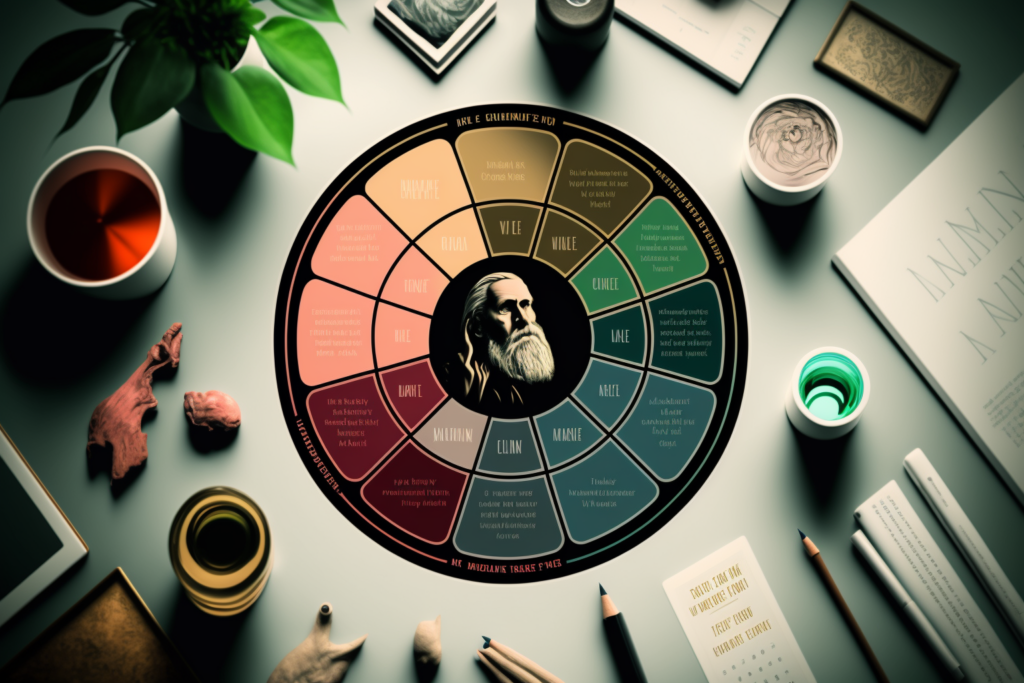
Branding is more than just a logo, a color scheme, or a tagline. It’s the essence of your business, the story that sets you apart, the promise that you make to your audience. It’s the heart and soul of your brand, the reason why people choose you over your competitors, and the foundation of your success.
For creatives, conscious entrepreneurs, and non-profit organizations, branding is even more crucial. It’s not just about selling products or services, but about creating meaningful change, making a positive impact, and connecting with people on a deeper level. It’s about bringing your vision to life, inspiring others to join your mission, and building a community of like-minded individuals who share your values.
In this post, we’ll explore the framework of human-centered branding, which includes Brand Purpose, Brand Persona, Brand Personality, Brand Proclamation, Brand Positioning, Brand Presence, and Brand Performance. We’ll break down each element and show you how to use it to create a conscious brand that reflects your purpose, resonates with your audience, and delivers a positive and memorable brand experience. Whether you’re a creative, an entrepreneur, or a non-profit organization, this guide will help you build a brand that truly matters.
Brand Purpose: Why You Exist and What You Stand For
Your brand purpose is the foundation of your branding efforts. It’s the reason why you exist, the impact you want to make, and the values you stand for. It’s not just a statement that sounds good on paper, but a guiding force that informs every decision you make and every action you take.
To define your brand purpose, start by asking yourself some fundamental questions:
- What problem do you solve?
- What impact do you want to make?
- What values do you embody?
- What makes you unique?
Once you have a clear understanding of your purpose, you can use it to inform your brand vision, mission statement, values, goals, and offerings. You can also use it to create a compelling brand story that resonates with your audience and inspires them to join your mission.

Brand Persona: Understanding Your Audience
Your brand persona is the representation of your ideal customer or client. It’s the archetype that embodies the characteristics, behaviors, and needs of the people you want to attract and serve. By understanding your brand persona, you can create a brand that resonates with your audience and speaks to their desires and aspirations.
To define your brand persona, start by researching your target audience. You can use market research, surveys, social media analytics, and customer feedback to gather insights about their demographics, psychographics, values, and behaviors. You can also create buyer personas, which are fictional representations of your ideal customers that help you visualize their needs and motivations.
Once you have a clear understanding of your brand persona, you can use it to inform your brand messaging, visual identity, and brand experience. You can create a brand voice and tone that speaks to their language and style. You can choose colors, fonts, and imagery that appeal to their preferences and aesthetics. And you can create brand experiences that address their pain points and deliver value.

Brand Personality: Giving Your Brand a Human Touch
Your brand personality is the set of human characteristics that your brand embodies. It’s the personality traits, emotions, and values that your brand expresses through its messaging, visual identity, and brand experience. By defining your brand personality, you can create a brand that feels relatable, trustworthy, and memorable to your audience.
One way to define your brand personality is through Carl Jung’s brand archetypes. Jung believed that there are 12 universal archetypes that represent the fundamental aspects of the human psyche. By aligning your brand with one or more of these archetypes, you can create a powerful and resonant brand personality that taps into your audience’s subconscious desires and motivations.
Here are the 12 archetypes and their corresponding brand personalities:
- The Innocent: optimistic, pure, and simple
- The Explorer: adventurous, curious, and free-spirited
- The Sage: wise, knowledgeable, and reflective
- The Hero: courageous, determined, and noble
- The Outlaw: rebellious, provocative, and daring
- The Magician: transformative, visionary, and intuitive
- The Regular Guy/Girl: down-to-earth, friendly, and relatable
- The Lover: passionate, sensual, and romantic
- The Jester: playful, humorous, and irreverent
- The Caregiver: compassionate, nurturing, and selfless
- The Creator: imaginative, innovative, and expressive
- The Ruler: powerful, influential, and authoritative
To choose the right archetype(s) for your brand, consider your brand purpose, brand persona, and audience preferences. Think about what archetype(s) align with your brand’s values, aspirations, and vision. Then, use your chosen archetype(s) to inform your brand voice, tone, messaging, and visual identity.

Brand Proclamation: Telling Your Brand Story
Your brand proclamation is the way you communicate your brand story and message to your audience. It’s the story you tell about who you are, what you do, and why you matter. By crafting a powerful brand proclamation, you can create a brand that resonates with your audience and inspires them to take action.
To create an effective brand proclamation, you need to first understand your brand purpose, brand persona, and brand personality. Use these elements to craft a brand story and brand messaging that reflects your brand’s values, aspirations, and vision. Your brand story should be authentic, compelling, and memorable.
Brand Positioning: Finding Your Unique Place in the Market
Brand positioning is all about finding your unique place in the market. It’s the process of defining how you want to be perceived by your target audience, and what makes you stand out from the competition. Your brand positioning should reflect your brand purpose, persona, and personality, and should be based on a deep understanding of your audience and the competitive landscape.
To begin the process of brand positioning, start by researching your audience and your competitors. Look for gaps in the market that your brand can fill, and identify areas where you can differentiate yourself from the competition. This might involve developing a unique product or service offering, or focusing on a specific niche within your market.
Once you’ve identified your unique selling proposition, you can begin to craft your brand positioning statement. This is a concise statement that sums up what makes your brand unique and different, and how you solve a specific problem or meet a specific need for your target audience. Your brand positioning statement should be clear, concise, and memorable. It should be easy for your audience to understand, and should communicate your brand’s unique value proposition.

Brand Presence: Creating a Visual Identity that Reflects Your Brand
Your brand presence is how your brand is visually represented to the world. It includes your logo, color palette, typography, imagery, and other visual elements that create a cohesive and recognizable brand identity. Your brand presence should be designed to reflect your brand purpose, persona, and personality, and should be consistent across all touchpoints.
When creating your brand presence, it’s important to start with a clear understanding of your brand identity. This includes your brand purpose, persona, and personality, as well as your unique selling proposition and target audience. Use this information to guide your design choices, and make sure that your brand presence accurately reflects your brand identity.
Brand Performance: Delivering an Exceptional Brand Experience
Your brand performance is all about how your brand interacts with your customers and the experience they have with your brand. It includes everything from customer service and product quality to marketing campaigns and social media engagement. Your brand performance should be designed to deliver an exceptional brand experience that aligns with your brand purpose, persona, and personality.
To deliver an exceptional brand experience, it’s important to start with a deep understanding of your target audience. What are their pain points, needs, and desires? How can your brand help to solve their problems and fulfill their aspirations? Use this information to guide your brand performance strategy, and ensure that every touchpoint is designed to deliver value and build trust with your customers.
By focusing on brand performance and delivering an exceptional brand experience, you can build a strong and loyal customer base, differentiate your brand from competitors, and drive growth for your business.
Conclusion
Branding is a crucial element of any business, but it is especially important for creatives, conscious entrepreneurs, and non-profit organizations. By developing a strong brand purpose, persona, personality, proclamation, positioning, presence, and performance, you can establish a unique and compelling brand identity that resonates with your target audience and sets you apart from competitors.
A successful brand is not just about visual identity, but also about creating a meaningful connection with your target audience through shared values and experiences. By focusing on human-centered branding, you can create a brand that is not only visually appealing, but also emotionally resonant and intellectually engaging.
By understanding your target audience’s needs, wants, and pain points, and positioning your brand as the solution to their problems, you can create a strong value proposition that communicates the unique value that your brand provides to your customers.
In today’s competitive market, it is more important than ever to establish a strong brand identity that stands out and resonates with your target audience. By following the framework outlined in this article, you can develop a strong and effective brand that connects with your target audience and helps you achieve your business goals.
Want to create a powerful and purposeful brand that stands out from the crowd? Let’s work together to bring your vision to life. Check out my custom branding packages.
comments +